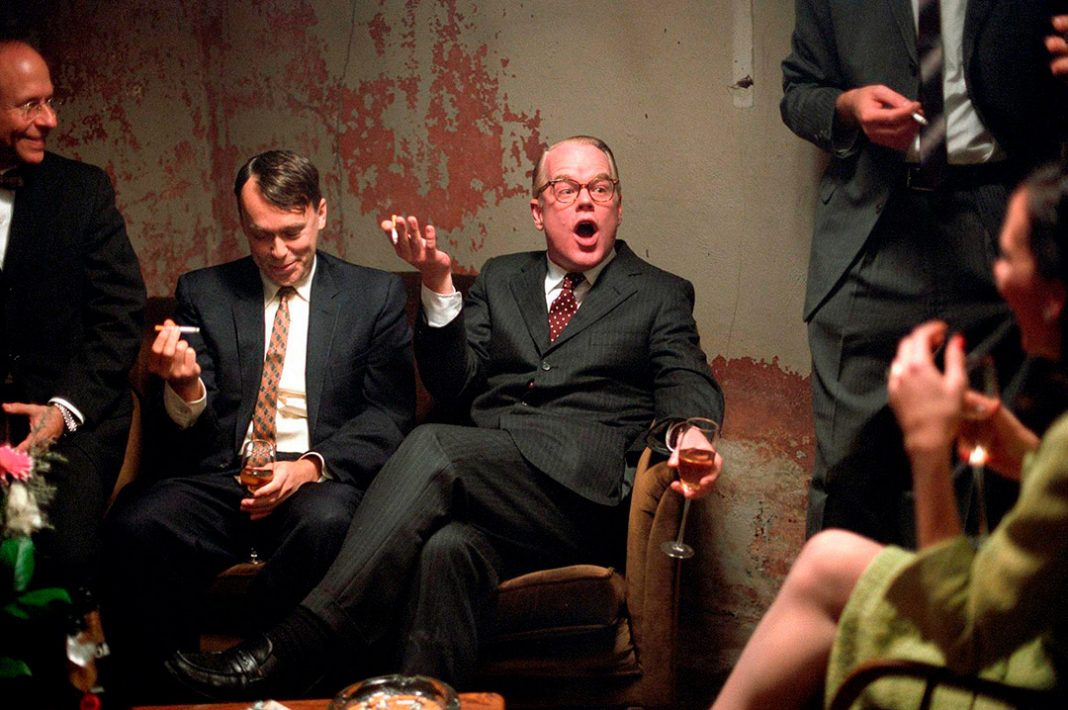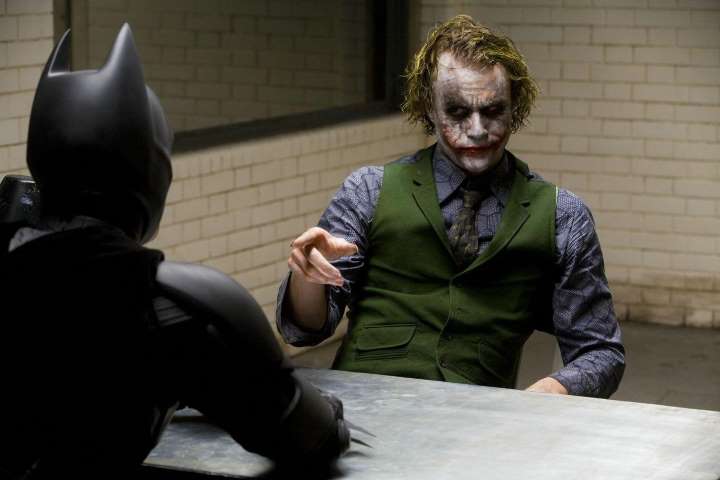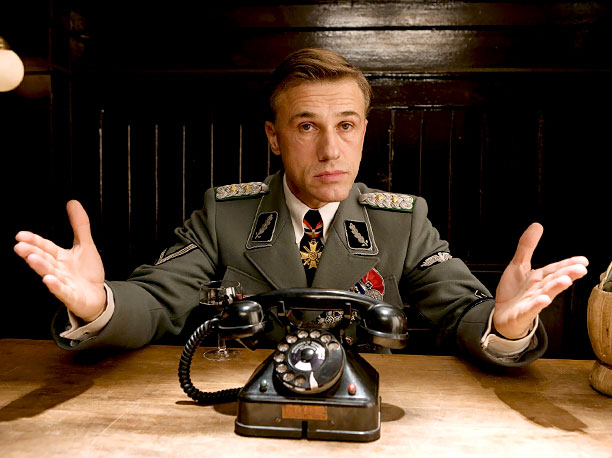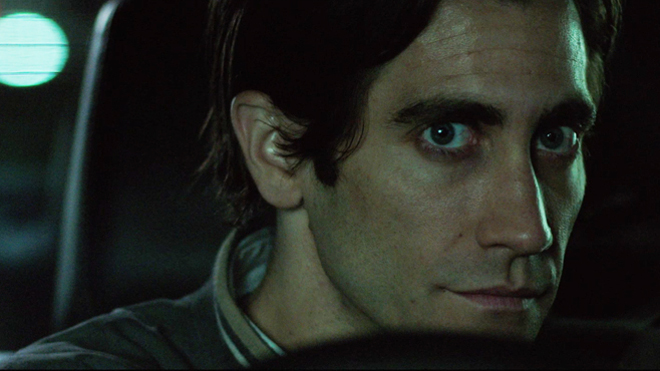The 21st century has produced many films, but not all of them have brought actors exceptional fame. Here are 10 films with the most spectacular performances by actors. There are some actors who, when you see them in the film description, you know you’re about to spend 2 hours with the perfect cinema.
We’ve selected 10 truly exceptional films of the new century that are guaranteed to keep you glued to your screens for years to come.

10. “Monster’s Ball”, (2001) – Halle Berry
Violence, pain, loneliness, sex, hatred and the search for happiness. These are the ingredients of “A Feast for Monsters”. This is what life is made of. Deep down, this is a story about love. About two lonely people who have been alone for so long that they have almost forgotten that there is such a feeling as love. These two lonely souls discovered each other and decided to be together, despite the obvious signs that told them not to. The beautiful black woman Leticia and the racist, white man Hank suddenly discover each other and scene by scene it becomes clear that they have more in common than one might have thought at first. But their skin colour doesn’t match… Trouble follows trouble, and the whole film creates a gloomy mood not only all around, but also inside, something is covered with a grey film. But somehow, at the end of A Feast for Monsters, you start to believe that there is always hope and that everything will be all right. This is definitely one of Halle Berry’s best performances. She appears on screen like a fire and keeps burning until the end of the film. Her excruciating pain, her childlike joy and her incandescent lust fill the screen so vividly that there is no question as to who is the star of this feast. (R.C.)

9. “Monster”, (2003) – Charlize Theron
In 2003, much ado was made when the film Monster (directed by Patty Jenkins) hit the screens. Because the authors swapped the traditional killers and their victims. They were helped by recent realities: in 1989, America executed the first female murderer in the United States. The cinema simply had no right to overlook such an event. The result lived up to expectations. The Golden Globe Award and the Oscar went to Charlize Theron in the lead role. Much has been written about her. And everyone wondered how Hollywood make-up artists managed to turn such a beauty into a real monster. That kind of transformation really makes a strong impression. And the film itself.

8. “Ray”, (2004) – Jamie Foxx
Jamie Foxx met legendary singer and pianist Ray Charles for a role in the biopic Ray (2004). The actor is a pianist, so it was easy to get the musician’s approval. Foxx lost 30 kilos to be more like Charles and his comedy experience helped him to imitate the singer’s behaviour.
The film received very positive reviews from critics, with particular praise for Foxx’s performance. The film was also a commercial success, earning $124.7 million worldwide on a production budget of $40 million.
However, the greatest difficulty for the actor was the portrayal of blindness. The director suggested that Foxx temporarily become ‘blind’. For 14 hours a day, the actor’s eyelids were glued. At first, Foxx was panic-stricken and claustrophobic, but eventually he got used to it.
The film ‘Rey’ received numerous awards and nominations and was nominated in six categories at the 77th Oscars. Foxx won the Best Actor Oscar for the role, as well as a Golden Globe, a BAFTA, a Screen Actors Guild Award and a Critics’ Choice Award, making him the second actor to win all five Lead Actor Awards for the same role and the only actor to win a Golden Globe in the musical or comedy category, rather than the dramatic category.

7. “Capote”, (2005) – Philip Seymour Hoffman
This is a biographical account of Truman Capote, a short-lived but spectacular American writer. One day in 1959, he read a newspaper report about the brutal murder in Kansas of a wealthy American farmer and three members of his family. Soon after, the writer travels to the scene of the bloody crime and makes the acquaintance of two young men who are suspected of the cold-blooded murders. During his visits to the prison, the homosexual writer begins to have special feelings for one of the two perpetrators. They meet more and more often in prison and communicate on a variety of topics. But the day comes when both killers are executed by hanging. Finally, it was through these frank conversations in prison that Kapote wrote, over a period of six years, the novel based on true events, and perhaps his most famous novel, Cold-Blooded. Published in Lithuanian in 1996, it is one of the most famous masterpieces of US literature of all time. The huge success of the book made Capote a millionaire, but no amount of money could protect him from his inner emptiness and the fear of a new book, which he thought should have been better. This film tells the story of Capote’s daily life during the writing of his most famous biographical work. The writing of In Cold Blood had a profound effect on the author. He began to drink more and more often, took drugs, and eventually died of health problems caused by alcohol, cigarettes and drugs of uncertain origin. Before his death, the writer had started a new novel, but was unable to finish it. In his years of writing, Capote wrote only two books that attracted a large readership (Cold Blooded and the classic hit Breakfast at Tiffany’s), but at least 20 films and TV series have been made using his stories, short novels and screenplays.
In an interesting and strange coincidence, Capote, one of the greatest and most tragic writers in the USA, is played masterfully in this film by the talented Philip Seymour Hoffman. The actor won an Oscar for the role. But the end of his life is strikingly similar to the end of Capote’s existence. In February 2014, the actor was found dead of a drug overdose in his apartment in New York. The story goes that the actor, who had played a number of memorable roles in famous Hollywood films and was highly regarded by directors, had for some reason felt extremely lonely and isolated before his death and, for unknown reasons, had turned back to the use of the deadly drug heroin after a long break. Some have even later suggested that the Hollywood talent, who was particularly depressed by something, had even decided to withdraw from this troublesome world in this drastic way. (D.D.)

6. “There Will Be Blood”, (2007) – Daniel Day-Lewis
Paul Thomas Anderson’s work has always been influenced by the old masters who have become modern classics. He shares with the brilliant Orson Welles a penchant for epic summaries and the fact that both have earned a unique place in the US cinematic oligarchy even before their 30th birthday. Like Jean Renoir or Max Ophüls, Paul Thomas Anderson likes the camera to move as much as possible. He shares with the French New Wave and the American Martin Scorsese a “Sinophilic” love of the classics. As in the films of Robert Altman, P.T. Anderson’s works also feature large ensembles of high-calibre actors in which individual, striking performances never undermine the overall whole. All these qualities are also present in the film ‘There Will Be Blood’, a masterpiece of modern cinema, based on the novel ‘Nafta’ by the American literary realist Upton Sinclair, which was called a masterpiece of modern cinema shortly after its release. Apparently, it is no coincidence that in the film’s title, the director replaces the dirty liquid, often referred to as the black gold of the Earth, with a completely different substance that pulsates in people’s veins. The two-Oscar-winning drama There Will Be Blood is a true epic of human ambition. It is a story of triumph and failure, greed and the cruel price of ambition, evoking biblical associations, as experienced first-hand by Daniel Pleinview, a miner who was tempted to catch the American dream. One day, he learned that a town in the south-west of the state had huge oil deposits on its soil. Together with his young son, the man settled in Little Boston and soon found “black gold” in the barren land. But “There Will Be Blood” is not a story of astonishing success. Or rather, not just a success story. Just when the settlers were starting to do well, big problems began to emerge, and suddenly the fountains of oil gushing up from the depths of the earth began to change Daniel’s character and his previous values with astonishing speed, turning him from fabulous riches into an arrogant tycoon. But greed always comes at a heavy price. This was perfectly illustrated in the 1956 US classic The Giant: James Dean, the actor who embodied the ideals of post-war youth, played cowboy Jett Market, whose discovery of oil on his land and the riches it brings kills off all the positive qualities in him. Daniel Pleinview undergoes a similar transformation. The film won two Oscars, for cinematographer Robert Elswit and Daniel Day-Lewis in the lead role. (G.J.)

5. “The Dark Knight”, (2008) – Heath Ledger
British director, writer and producer Christopher Nolan has set a very high bar in the world of superheroes with his incomparable Dark Knight. Everything we need to know about Batman is in this dark and very realistic thriller. Critics and audiences alike consider this film to be the best in the history of DC comics adaptations. Although no one could play Batman better than actor Christian Bale, it is Heath Ledger and his maniac, chaos-faced Joker who command all the attention in this film. The director completely changes the perception of ordinary thieves and criminals by turning the Joker into an extraordinary character – he has no desire for other people’s property or money, his only ambition is to create chaos around him and destroy Batman as a person and a personality. In the previous films, each role was subject to serious auditions and consideration from a wide range of actors. In this film, director Christopher Nolan was certain that Heath Ledger was the one to play the Joker and he was the only one on the director’s cast list. This film is the best work of DC and Warner Bros. When the news of Heath Ledger’s death hit the world in January 2008, it only added to the mystique of the film among fans. The very fact that Heath kept a diary of the Joker throughout the filming of the movie, in which he wrote famous phrases, drew illustrations and rewrote lines from the script, makes the atmosphere of the whole film and the character of the Joker even more real and mysterious. Christopher Nolan’s Batman is the most successful character, but it is Heath Ledger’s Joker who has received the most praise and has become a superhero icon. The Dark Knight transcends all genre boundaries and is truly one of the best superhero action films.

4. “Inglourious Basterds”, (2009) – Christoph Waltz
Christoph Waltz was born in 1956 in Vienna, Austria. Despite not being born in Germany, he has been a German citizen all his life. He was born and raised in a theatrical family and environment. His mother is Austrian costume designer Elisabeth Urbancic, his father is German set designer Johannes Waltz and his grandparents were actors in the Vienna theatre. After graduating from the Academy of Theatre, Christoph went to New York for further training. After meeting his wife there, he returned to Vienna and then moved to London. In the 1980s, the actor lived mainly between the two countries, living in London and working in German theatres. Slowly, he began to get roles in TV films and TV series, but his attempts to “break out” to English-speaking audiences were unsuccessful. Christoph himself said at the time that he was happy to be able to support his family through acting and continued to work tirelessly. This continued until he met Quentin Tarantino. Then his career in Hollywood took off. The role of Colonel Hans in Inglourious Basterds transformed him permanently from a German TV actor into a top-earning star. Although he is a wonderful actor, Christoph Waltz has not been famous for a long time, and the actor himself probably did not expect to get so much attention when he starred in Quentin Tarantino’s Inglourious Basterds. The film tells the fictional story of a group of Jewish-American soldiers who kill Nazis in occupied France during World War II. The film stars Christoph Waltz as Colonel Hans Landa, a cold-blooded SS (Nazi paramilitary organisation) officer. In 2010, the actor won an Oscar for his role in ‘Inglourious Basterds’, as well as Golden Globe and British Academy Film Awards. For this role, the actor collected 27 major awards, including a nomination for Best Supporting Actor at the 2009 Cannes International Film Festival. After 30 years of acting, nobody thought Christoph Waltz would secure a place in Hollywood. Neither did the actor himself. Speaking to a German celebrity magazine, he said: “Of course I didn’t expect my role to cause such a stir, after all, I’m Christoph Waltz, not Lady Gaga”. (M.L.)

3. “Nightcrawler”, (2014) – Jake Gyllenhall
Dan Gilroy’s directorial debut, The Night Wanderer, was more than a success, winning critical and audience praise and being nominated for prestigious film awards. Dan Gilroy was previously unheard of in the cinema world, best known as the husband of the famous actress Rene Russo, and his career highlights include collaborating with other filmmakers on the scripts for “Hardened Steel” and “Bourne. Legacy”. However, after the neo-noir thriller “The Night Wanderer”, the situation has changed, with critics hailing the film as a modern masterpiece. “The Night Wanderer tells the story of Lou, a sociopathic man who, after a long and unsuccessful job search, becomes a freelance cameraman filming crime and disaster scenes. Lou manages to sell one report to a TV news channel and, seeing the potential for profit, he hits the streets every night on the hunt for sensational footage. Eventually, Lou’s ambition gets the better of him and there is nothing he won’t do for a good story. Although Jake Gyllenhaal, the actor who plays Lou, has put in a lot of effort to play arguably one of the most unpleasant types in the world, it’s safe to say that this is probably the strongest role of his career. The film should be of particular interest to those who work in or want to learn more about the media. It reveals the dark side of journalism and raises questions about work ethics. How much can a reporter afford? Of course, this is stipulated in legislation, but it is not always respected. The most important thing in television is ratings. How far can you go for them? What can be shown and what would be too much to show? The characters in the film act without scruples and, as is often the case, go unpunished and succeed in their aims. The moral of the film is rather ironic: climb over other people’s heads and you will succeed. On screen, the audience sees the success story of an ambitious sociopath, with more than one dead body, blackmail and betrayal in his wake. The director has taken a risk with this creative choice, but his ideas are very powerful and the film raises many questions. Dan Gilroy does not judge the way the media works, he only interprets, and it is up to the viewer to decide whether to acquit or convict the characters. (J.M.)

2. “Joker”, (2019) – Joaquin Phoenix
Todd Phillips’ The Joker, winner of the Venice Film Festival’s top prize, is undoubtedly the most talked-about film of 2019. It is an unexpected take on the Batman comic book series. Only this time, the main character is not Batman, but his eternal adversary, the Joker, who terrorises the city of Gotham. The evolution of this character in cinema has been well described by my colleague Izolda Keidošiūtė, whose great article “Did you have the chance to dance with Satan in the moonlight?” with the subtitle “The on-screen metamorphosis of the Joker” in the latest issue of Kinas magazine, is highly recommended to everyone. First of all, it must be stressed that Todd Phillips’ The Joker has nothing in common with traditional film comics. Batman’s main adversary, the Joker, appeared in DC Comics (Detective Comics) as early as 1940. There are different versions of the character’s pre-history, from gangster to loser comedian. According to Alan Moore’s canonical version, the Joker took on his specific appearance after falling into a vat of acid while fleeing his pursuers. The main distinguishing features of his appearance are his pale face, green hair (according to one stylist, “the colour of broccoli”), a wide smile accentuated by a red lipstick, and a purple costume (see Batman (1989) with Jack Nicholson). Heath Ledger played the Joker as a remorseless anarchist whose sophisticated crimes were plunging Gotham City into even greater chaos. Todd Phillips, explaining why he set The Joker in 1981, said he was inspired by the US “new wave”, in particular Martin Scorsese’s Taxi Driver and other films. “The Joker is so far removed from the style of the comic book that audiences perceive it as a totally realistic and topical film. Americans are now divided into two camps: some see the film as propaganda for left-wing politics and criticism of capitalism, while others call it a racist piece of work that illustrates the policies of President Donald Trump. (G.J.)

1. “The Whale”, (2022) – Brendan Fraser
Thriller elements are also present in Aronofsky’s latest film so far, The Whale, which can be called, first of all, a benefit for actor Brendan Fraser. The audience, who know the actor most from the oft-repeated ‘The Mummy’, is in for a shocking surprise: the actor’s appearance has changed beyond words. Fraser won the Best Actor Oscar, the Critics’ Choice and Screen Actors’ Guild Awards, and was nominated for a Golden Globe and a British Academy Award for this role. The film also won the Oscar for Best Make-up and Hairstyling, while Chau was nominated for Best Supporting Actress and received the Producers Guild of America Award for Best Theatrical Motion Picture.
“Whale is a screen adaptation of Samuel D. Hunter’s chamber play, so the director chose, according to one Polish film critic, an apartment “behind the gates of hell”, which does not stand out with its special design or the elaborate comforts that the creators of contemporary Lithuanian comedies like to boast of. It is a kind of “earthly abyss”, where Charlie, the main character of the film, lives (if one can call his painful existence that), suffering from critical overweight and emotionally broken by personal dramas: his closest friend has died, his relationship with his ex-wife and his adolescent daughter has practically broken down, and his only support is the nurse who used to come to visit him. Charlie is so ashamed of his body that he never turns on his webcam when interacting with the students of his online writing course. What’s more, Charlie’s health is deteriorating rapidly and requires expensive treatment. (G.J.)
Gediminas Jankauskas, Milda Lileikaitė, Dailius Dargis, Raminta Česnaitė, Justė Meištaitė




